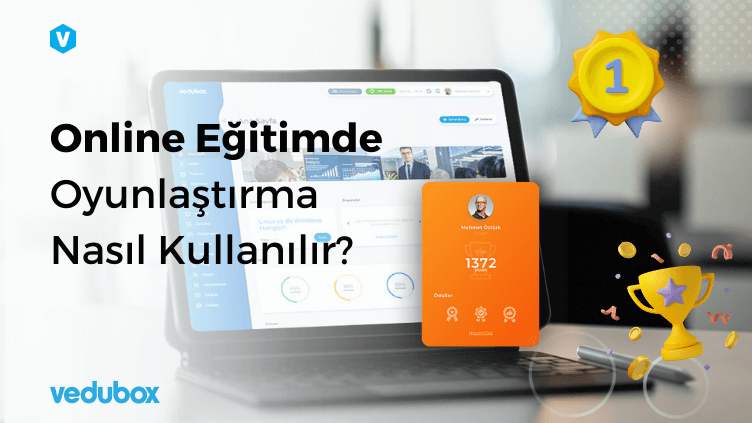With the hybrid education model, distance education and face-to-face education come together. The strengths of the two models combine in one education model.
Educational models are constantly changing and adapting to the flow of life. The development of technology and social events are very influential in this. From the beginning of the 20th century, education systems began to differentiate with the big breakthroughs and technological changes in the field of psychology.
Education systems, which have shown great changes in a short time compared to the long period of history, have reached completely different points with technology today.
The distance education system, which was adopted as an alternative education model for a long time, suddenly became an important part of education within a few years. With the pandemic in 2020 and the effects of which still continue, hundreds of millions of students received distance education.
So when this pandemic is over, will distance education no longer be used? Will there be a return to the old system? The opinions of the experts on this subject are that the education will be carried out with a hybrid model.
What Is Hybrid Education?
Hybrid education is an education model in which several different education models are applied together. In hybrid education, it is aimed to get a more successful education output by evaluating the superior features of different models together. For now, the hybrid education model foreseen for the future is that online education and face-to-face education will be carried out together.
In this education model, options such as reinforcing the education given at school with online education at home or making the subject to be covered at home permanent with face-to-face education can be applied.
In fact, the hybrid education model is not a model to be used for the first time. Even before the compulsory online education process, many institutions and states adopted this model, either with pilot applications or with general practice. The most obvious example of this education model is the system known as the ‘flipped classroom’.
In this system, students watch or study the video or educational content given by the teacher or trainer at their home. Then, they can hold question-answer or discussion sessions about these contents in the classroom. There are many educational institutions that successfully implemented this system.
With such studies in the hybrid education model, more efficient lessons can be taught by integrating online education and face-to-face education. Hereby, the results to be obtained from the training can be more permanent.
What are the Benefits of Hybrid Education?
There are many benefits of the hybrid education model, where online education and face-to-face education are applied together. These benefits can be diversified in terms of educational institutions, educators, students and parents. We can list some of them as follows:
1. Ability of Self-Learning
The biggest reason why classical education systems cannot meet the needs today is that they offer ready-made information. As a result of the rote structure of education systems, the change in the way the problem is presented can confuse the student. For this reason, studies focused on educational practices are applied in new education models.
An environment that presents educational content outside of the classroom and discusses these contents in face-to-face education supports students in this respect. Thus, the student learns to do research to get more information.
Thanks to the hybrid education model, students’ self-learning skills develop. Thus, by acquiring information from different angles, he can match the correct information to the problem, even if the problem comes in different ways. They can approach problems more solution-oriented.
2. Time Management
Various methods are being developed to use time well and to spend it efficiently. Today, when we are surrounded by so many distractions, staying focused and using time efficiently has become an invaluable skill.
Hybrid education models help to manage time well for institutions, instructors and students. Instead of studying in schools 7-8 hours a day, 5 days a week, time can be saved for all participants of the training by transferring a part of the training to the online environment.
3. Efficient Resource Usage
With the increasing population, educational institutions need to serve more people. Classes are now more crowded or there are more classes in schools. This requires rethinking resource use. School buildings, teachers, their expenses cost considerable budgets.
With the hybrid education model, some of these resources are eliminated, while others are significantly reduced. For example, smaller school buildings mean less cost.
4. Flexibility in Time, Space and Application
When you train with the hybrid education model, you can provide flexibility for students, trainers and institutions. Flexibility in this model can be considered from different perspectives. For example, when video and other educational content is stored in the cloud-based library, students can access the resources whenever they want. Teachers and students can participate in live lessons whenever and wherever they want.
Thanks to the hybrid education model that provides flexibility in learning, it can provide flexibility in practice in addition to time and space.
- Audio, visual and mixed resources can be used together for students with different learning styles,
- Gamification techniques can be used for students to learn by having fun,
- You can process more interactive lessons with the smartboard.
These are just some of them. The LMS features determine how much flexibility you offer. Therefore, make sure that you are training online with the right LMS.
5. Active Participation in Lesson
Not every student can be successful in actively participating in the lesson. It can be difficult to speak in class and to express their ideas clearly for students who are introverted and have problems in communication. Some students cannot achieve the full learning related to the subjects they need to learn in the lesson during the lesson. While they can, it may take a lot of effort to do so.
Thanks to hybrid models, introverted students who have problems in communication can get a more efficient education with online education, and get information about the questions in their minds by contacting the teacher one-on-one. If they want to fully achieve the learning, they can reinforce it by watching online lesson materials and live lessons over and over. If necessary, they can get support by meeting face to face with the teacher.
What is Needed in the Hybrid Education Model?
When an institution adopts a hybrid education model, it requires new tools. When an educational institution starts to provide education with a hybrid education model by combining online education and face-to-face education, it needs the followings:
1. LMS – Learning Management System: LMS is the most important tool for the realization of distance education. LMS is an online tool where
- students can enrol,
- students access to educational content,
- students can communicate with teachers,
- teachers can assign homework,
- teachers can teach lessons.
“What is LMS?” Check out our related article to get a more detailed answer to the question.
2. Simultaneous Courses: Online education system should include not only educational content but also simultaneous lessons. A teacher must be able to conduct classes online with their students.
3. Discussion Environment: Just like in physical classrooms, there is a need for a discussion environment in which students can discuss a topic and communicate with their teacher in online lessons.
4. Sharing Educational Content: Educational content is very important in online education. Students should also be able to access educational content online, where they can continue their education whenever they want. For this reason, systems, where all kinds of educational content can be loaded and accessed according to classes and teachers, should be used in the LMS preference.
5. Educational Content Development: Numerous digital tools help teachers and institutions in developing online education content. While the material used in face-to-face education can be easily added to online systems in PDF or Word format, digital content development tools such as Camtasia and Articulate can be used for video tutorials and presentations.
When we consider all these, the advantage of hybrid education models in the future emerges. If an institution wants to adopt the hybrid education model and evaluate online education together with face-to-face education, it is very important to have a tool that offers all the features expected from an online education tool. In this regard, Vedubox serves institutions as one of the best online education tools in Turkey.
You can visit our website to review Vedubox, which offers online education services to institutions with live lessons, LMS, educational content library, online exam and question bank system, user management and an interface that can be easily used without requiring technical knowledge.
Learn more about hybrid education here: Online vs Hybrid Learning: What to expect from the online platform







